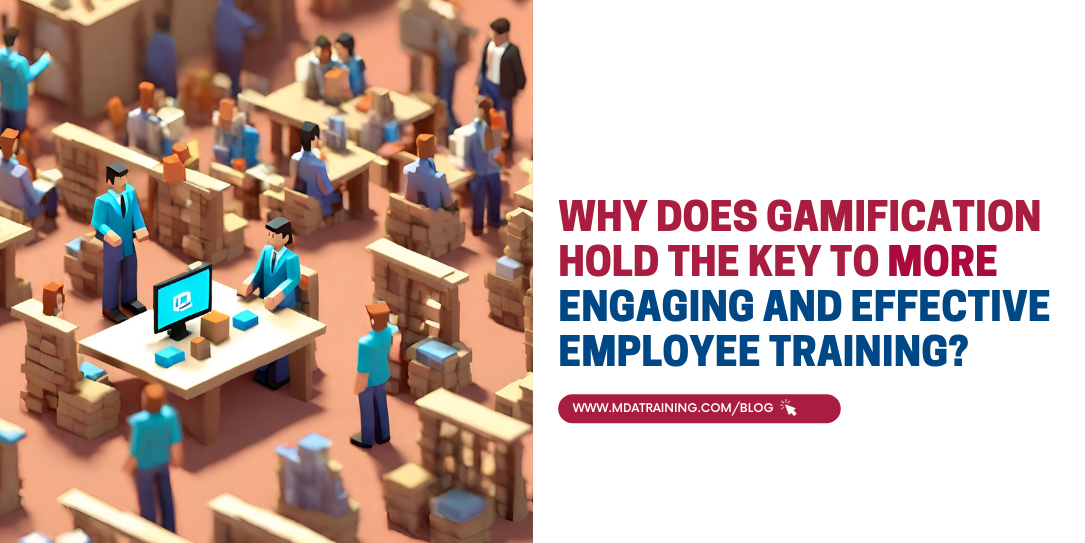Employee training and development are crucial aspects of any successful organisation. Not only does it help in upskilling and reskilling employees, but it also enhances job satisfaction and productivity. However, traditional training methods often struggle to engage and retain employees' attention. This is where gamification comes into play, revolutionising the way we approach employee training.
In this blog, we will explore the reasons why gamification is a powerful tool for creating engaging and effective employee training programs, supported by real case studies, industry stats, examples, and innovative ideas.
Understanding Gamification
Gamification involves integrating game-like elements and mechanics into non-game contexts, such as employee training, to enhance motivation, engagement, and learning. These elements may include points, badges, leaderboards, challenges, levels, and rewards. By leveraging the inherent human desire for competition, achievement, and recognition, gamification transforms mundane training material into interactive and enjoyable experiences.
The Power of Engagement
1. Case Study: Deloitte's Leadership Academy
Deloitte's Leadership Academy effectively utilises gamification to engage its employees. They introduced a gamified platform featuring an interactive map, quests, and badges. Within the first year, the platform saw a 47% increase in the use of training materials, showcasing the potential of gamification in enhancing engagement.
The Rise of Gamification
According to a Gartner study, more than 70% of the Global 2000 organisations will have at least one gamified application by 2023. This illustrates the growing trend and recognition of gamification's effectiveness in various industries.
Enhanced Learning and Retention
2. Case Study: Duolingo Language Learning App
Duolingo, a language learning app, employs gamification elements such as progress bars, streaks, and levels. Users are motivated to learn and practice consistently, leading to improved language proficiency. As of 2021, Duolingo had over 300 million users, indicating the success of gamified learning.
Learning Retention with Gamification
A study by the eLearning Industry revealed that gamification increases learning retention rates by up to 90%. When learners are engaged and enjoy the learning process, they are more likely to remember and apply what they've learned.
Fostering a Positive Learning Environment
3. Case Study: SAP's Road Warrior Game
SAP, a software company, introduced a gamified learning platform called "Roadwarrior." It helped employees learn about SAP's products in an engaging manner. The platform's success was evident, with 80% of participants completing the training.
Innovative Ideas: Scenario-based Simulations
Integrate scenario-based simulations into training modules, allowing employees to make decisions and experience the consequences within a safe, virtual environment. This not only enhances learning but also provides a sense of practical application.
Boosting Employee Motivation and Collaboration
4. Case Study: Ford's Global Manufacturing Learning Challenge
Ford implemented a gamified challenge to enhance collaboration and knowledge sharing among its global manufacturing teams. Employees participated in a gamified online learning environment, fostering healthy competition and boosting engagement.
Team-based Challenges
Implement team-based challenges or competitions within the organisation, where teams can compete in various learning modules. Reward the winning team to drive healthy competition and collaboration.
Addressing Different Learning Styles
5. Case Study: IBM's Innov8 Game
IBM created the Innov8 game to teach business process management to employees. The game simulated a virtual business environment, allowing employees to experiment and learn from their decisions. The game's immersive nature appealed to different learning styles, making the training more effective and enjoyable.
Personalised Learning Paths
Tailor the gamified training experience to individual learning preferences and abilities. Allow employees to choose their learning paths, levels, or modules based on their interests and strengths, enhancing their engagement and motivation.
Measuring Progress and Performance
6. Case Study: McDonald's Till Training Game
McDonald's utilised a gamified app to train employees on the point-of-sale system. The app not only provided interactive training but also allowed managers to monitor employees' progress and identify areas for improvement. Gamification facilitated real-time performance evaluation.
Performance Improvement with Gamification
A TalentLMS survey found that 87% of employees believe gamification makes them more productive and 84% feel it helps improve their performance. These statistics underline the impact of gamification on performance enhancement.
Cost-Effective Training Solutions
7. Case Study: Google's Code Jam
Google's Code Jam is an annual coding competition that not only attracts talent but also serves as a training platform. It offers challenging problems and encourages participants to develop problem-solving skills. Such events showcase how gamification can provide cost-effective training solutions while promoting engagement and skill development.
Virtual Reality Training
Incorporate virtual reality (VR) into training through gamification. VR can simulate real-world scenarios and tasks, providing a cost-effective and immersive learning experience that significantly enhances training outcomes.
Overcoming Challenges and Future Outlook
8. Challenges: Designing Effective Gamification
While gamification offers immense potential, designing effective gamified training experiences requires a deep understanding of the target audience, clear objectives, and appropriate game mechanics. Striking the right balance and ensuring alignment with organisational goals can be a challenge.
Future Outlook: AI and Gamification Integration
The future of gamification in employee training is likely to involve integration with artificial intelligence (AI). AI can personalise the gaming experience, adapt difficulty levels, and provide real-time feedback, making training even more engaging and effective.
What’s Next?
Gamification is a powerful tool that can transform employee training into an engaging and effective experience. Through case studies, industry stats, examples, and innovative ideas, we have explored the potential of gamification in enhancing engagement, promoting learning and retention, fostering a positive learning environment, and boosting employee motivation and collaboration. As organisations continue to evolve, embracing gamification in their training strategies will undoubtedly be a key factor in achieving successful learning outcomes and driving overall business success.

If you're interested in exploring how MDA Training can leverage gamification to elevate your employee training experiences, reach out to MDA Trainers today! Discover the exciting world of interactive learning and make your training programs truly impactful.









